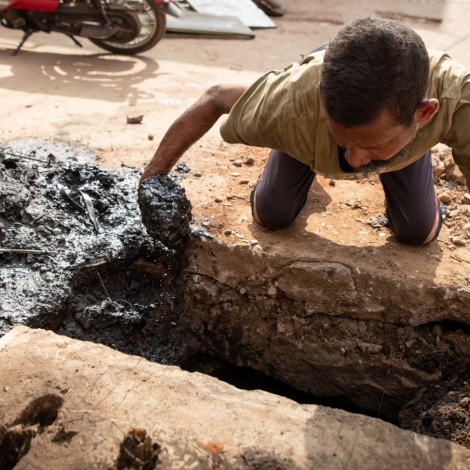Growing up in northern India, rainy days did not mean floating the paper boats or jumping into the puddles, but trying to wade through dirty wastewater and staying healthy by avoiding water borne illnesses. It was a standing order from my mother to take a bath as soon as we came back home from school or outdoors to wash off any contaminants. The reason was evident as all the wastewater pipes and drainage systems were choked by solid waste. Come monsoons and wastewater from these drains flowed freely into the streets and sometimes into our home, which was almost at street level.
Even today, many cities worldwide use a combination of sewered and non-sewered sanitation approaches. Non-sewered options, like septic tanks and pit latrines, are particularly challenging in densely populated urban areas.
Globally, the number of urban residents who lack safely managed sanitation has increased from 1.9 billion in 2000 to 2.3 billion in 2015, costing $223 billion a year in health costs, lost productivity and wages. Unsafely managed sanitation also affects people who do have access, as contamination can spread via polluted water, food, or through contact with flies.
In a recent analysis of 15 cities in the global south by WRI, 62 percent of sewage and fecal sludge is unsafely managed. In Dhaka, the most densely populated city in WRI’s sample, 75 percent of households rely on septic tanks, though many of these are not up to safety standards and leak, or are not emptied consistently enough.
The above situation is not uncommon in regions of Africa, either, from Kibera, the informal settlement (slumtown) in Nairobi, Kenya, in East Africa to Angola in South Africa and all the way to Benin and beyond in West Africa. Moving fecal sludge by truck requires appropriate regulations that are enforced, and this is often beyond the capability of local government and utilities.
Solutions to provide de-centralized waste management
Access to safely managed sanitation means that human waste is properly contained, transported, treated, reused or disposed. According to WHO households should not spend more than 3-5 percent of their monthly income on water and sanitation. However, sometimes the problem for low-income residents and tenants is not so much the monthly sanitation service cost, as the upfront capital cost of installation. In Kampala, Uganda, for instance, the cost of installing a sewered facility amounts to more than 200 percent of an average monthly household income, and for a ventilated pit latrines the cost can be more than 300 percent of the average income.
Engineering for Change’s Solutions Library features a number of safe disposal solutions for human waste, such as Laveo dry flush toilet, savyyloo, clivus multitrum composite toilet and others. These solutions are market tested and can provide low-cost options to areas where centralized human waste (both solid and liquid) management are limited.
Solving the water and sanitation crises globally shall take more than just providing the physical solutions. It will require market-based technological innovation combined with political will and affordable options. We will need all of those to achieve the United Nations Sustainable Development Goal 6 (SDG6) and leave no one behind as we ensure that the cities are livable for all, today and tomorrow.


I want to know more about the SavyyLoo